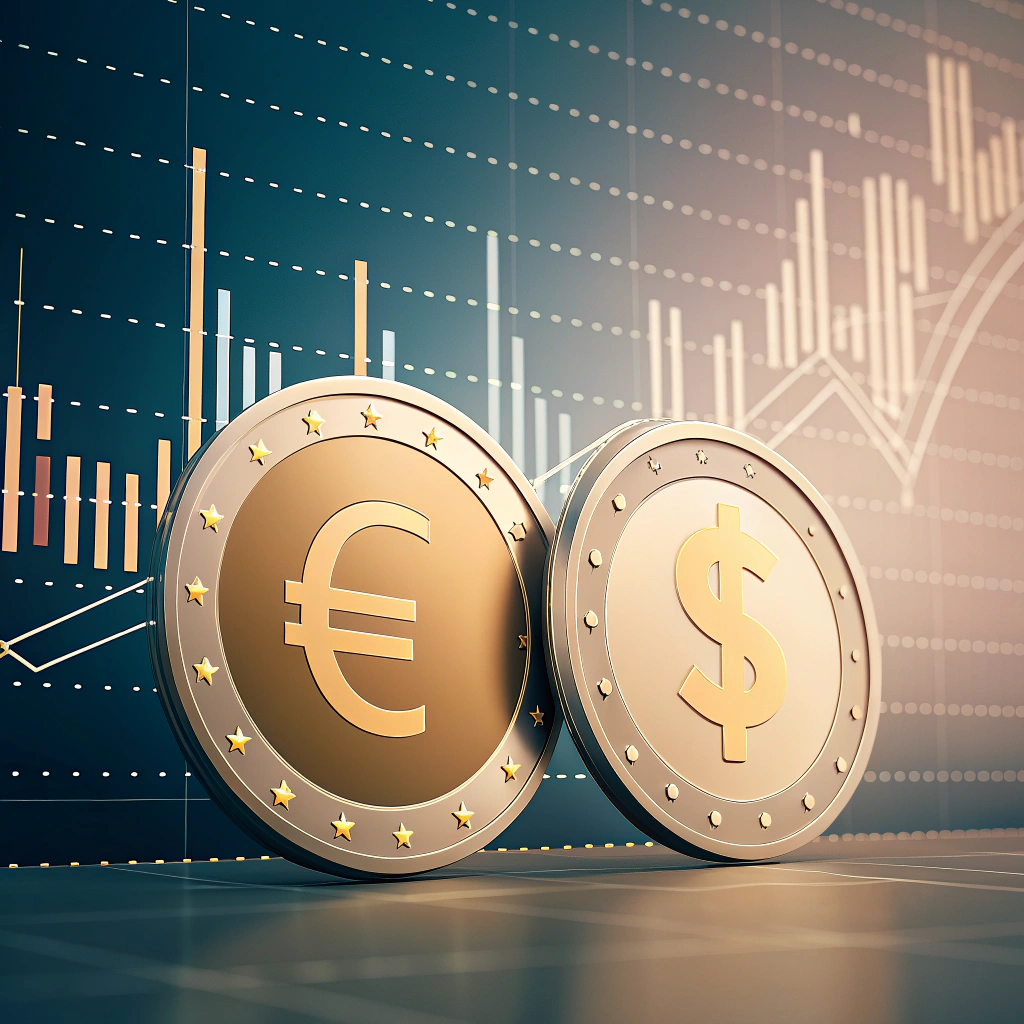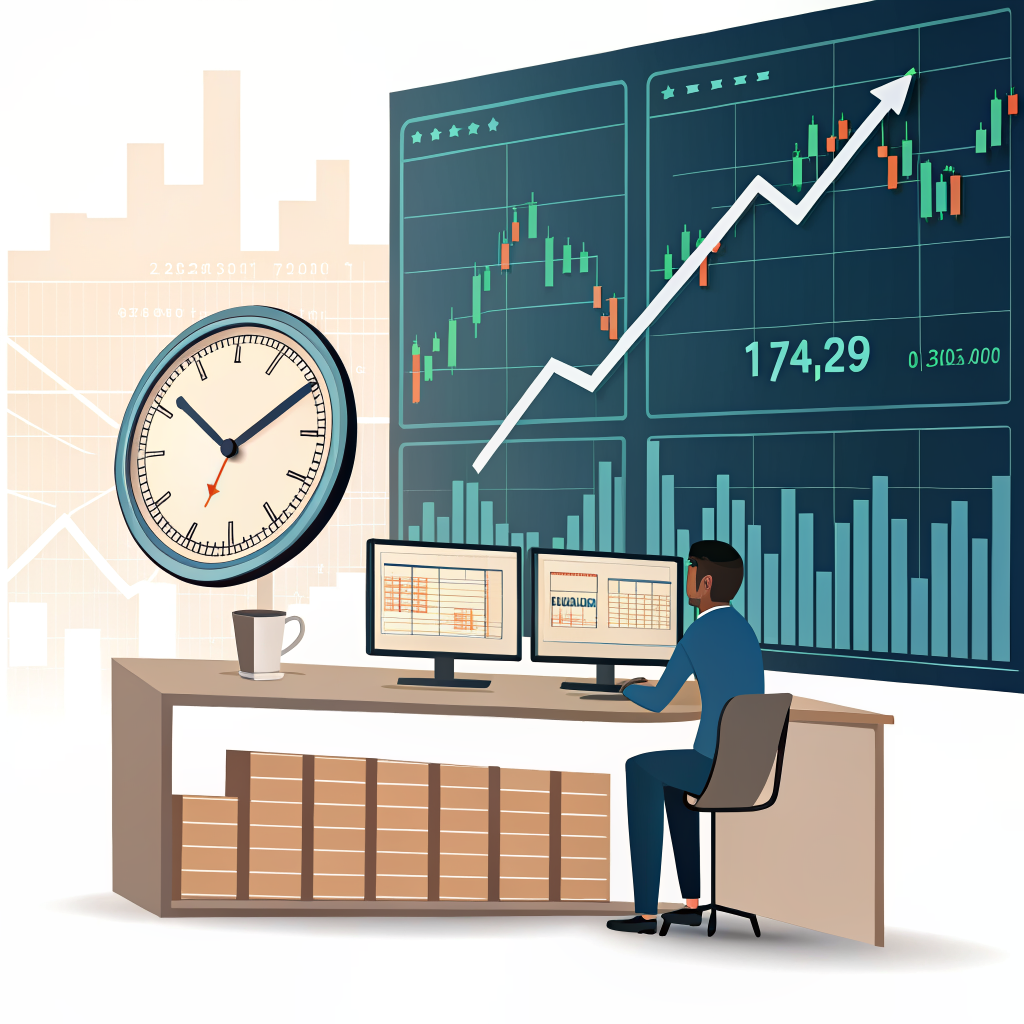
Introduction to EUR/USD Trading
What is the EUR/USD Currency Pair?
The EUR/USD currency pair represents the euro against the U.S. dollar, denoting how many U.S. dollars one euro can buy. It is the most traded forex pair in the world, offering unmatched liquidity and tight spreads due to its high volume.
Why EUR/USD Is the Most Popular Forex Pair
EUR/USD accounts for nearly 30% of global forex volume. Its popularity stems from:
- Economic strength of both the U.S. and Eurozone
- High liquidity and low transaction costs
- Consistent volatility and tradable patterns
How EUR/USD Trading Works
When you trade EUR/USD, it’s because you want to speculate on the value of the euro in relation to the dollar. If you think the euro will become stronger, you will go long. If you think it will weaken, you are short. This currency pair has a bid/ask spread, which determines how much money you make from movements in the prices.
Key Factors That Influence EUR/USD Movements
Central Bank Policies: ECB vs. Federal Reserve
Monetary policy of both the European Central Bank and the Federal Reserve will have a direct influence on the EUR/USD. From interest rate adjustments to quantitative easing and forward guidance, all these will impact capital flow-and thus trader sentiment.
Economic Indicators: Inflation, Jobs, GDP
Macro data such as Non-Farm Payrolls, Eurozone CPI, as well as GDP growth helps create a fluctuation in the EUR/USD. Traders monitor:
- U.S. employment reports
- Eurozone industrial production
- Central bank inflation targets
Geopolitical Events and Global Risk Sentiment
Political and other uncertainties, like EU debts or U.S. elections, can attract or send away a safe haven into or out of the dollar. Such global risk sentiment also has a bearing on demand for the euro as a risk-on currency.
Market Liquidity and Volatility Patterns
EUR/USD is most active during the London and New York sessions. Liquidity peaks during the overlap, which presents ideal conditions for day traders.

How to Trade EUR/USD: Trading Methods Explained
Spot Forex Trading
The most common method. You trade currency pairs directly with real-time exchange rates using margin and leverage.
Contracts for Difference (CFDs)
CFDs allow traders to speculate on EUR/USD without owning the underlying currency. They offer flexibility and access to leverage, but come with risk.
Forex Futures
Traded on centralized exchanges, forex futures provide a transparent alternative with expiry dates and margin requirements.
Options on EUR/USD
Options give the right, not obligation, to buy/sell EUR/USD at a specific price. Traders use them for hedging or speculative plays on volatility.
Spread Betting (for applicable regions)
Popular in the UK, spread betting involves speculating on price movement without owning the asset. Profits are tax-free in some jurisdictions.
Popular EUR/USD Trading Strategies
Day Trading EUR/USD
Involves opening and closing positions within the same day, capitalizing on short-term price movements.
Swing Trading the Pair
Swing traders hold trades for days or weeks, relying on broader technical patterns and fundamental shifts.
Trend Following Strategy
Traders follow long-term trends using moving averages, trendlines, and breakout strategies.
News-Based Trading
Traders capitalize on market reactions to economic releases and geopolitical news, using volatility to their advantage.
Scalping Techniques
Scalpers aim for small, quick profits by entering and exiting positions within minutes, using high-frequency tactics.
Technical & Fundamental Analysis for EUR/USD
Key Chart Patterns and Technical Indicators
Common tools include:
- Moving Averages (MA)
- Relative Strength Index (RSI)
- Fibonacci retracements
- Double tops and bottoms
Using Economic Calendars for Macro Analysis
Calendars track events like ECB speeches, U.S. inflation data, and GDP releases—crucial for planning trades around volatility spikes.
Combining Technical and Fundamental Insights
Top traders merge technical levels with macro trends for well-timed, high-conviction trades.
Risk Management in EUR/USD Trading
Position Sizing and Leverage Considerations
Using appropriate position size and leverage controls risk and prevents margin calls.
Setting Stop Loss and Take Profit Levels
Protecting capital with well-placed stop-loss and take-profit orders ensures emotional discipline.
Managing Emotional Discipline in Volatile Conditions
Emotions like greed and fear impair judgment. A rule-based plan and trading journal help maintain objectivity.

Best Times to Trade EUR/USD
Market Sessions: London, New York Overlap
The 8 AM to 12 PM EST window sees the most liquidity, ideal for active trading.
Volatility by Time of Day
Early mornings and around major economic announcements offer the most movement.
How News Releases Impact Timing
Plan trades around releases like ECB rate decisions or U.S. NFP to benefit from volatility.
Tools and Platforms for EUR/USD Trading
Choosing a Forex Broker
Look for:
- Tight spreads
- Low commissions
- Fast execution
- Regulatory oversight
Recommended Trading Platforms
Popular platforms include MetaTrader 4/5, TradingView, and cTrader for technical tools and automation.
Useful Indicators and Trading Tools
Include:
- Moving averages
- Bollinger Bands
- Economic calendars
- Trade simulators
Common Mistakes When Trading EUR/USD and How to Avoid Them
Overleveraging
High leverage amplifies risk. Use it cautiously and understand the margin implications.
Ignoring Economic Context
Trading without context leads to poor decisions. Always factor in macroeconomic themes.
Misreading Technical Setups
Avoid forcing trades. Confirm setups with multiple indicators and higher timeframes.
Frequently Asked Questions (FAQs)
What is the ideal strategy for EUR/USD beginners?
Start with trend-following and support/resistance strategies. Avoid high-frequency approaches until confident.
When is the best time to trade EUR/USD?
During the London/New-York session overlap (8 AM–12 PM EST), when liquidity and volatility are at their highest.
How do interest rate changes affect EUR/USD?
Higher U.S. interest rates tend to favor the dollar and reduce EUR/USD, and the contrary holds.
Is EUR/USD suitable for long-term investing?
Yes, based on macroeconomic developments and monetary policy cycles; there can be long-term trades in EUR/USD.
Conclusion: Mastering the EUR/USD Market
The EUR/USD market is the best combination of liquidity, volatility, and market structure for a new trader and a seasoned trader alike. And really, the application comes down to knowing price drivers, using tested methods and approaches in the process, while also developing effective risk management control. Traders can then approach trading on the EURUSD with confidence and consistency.
